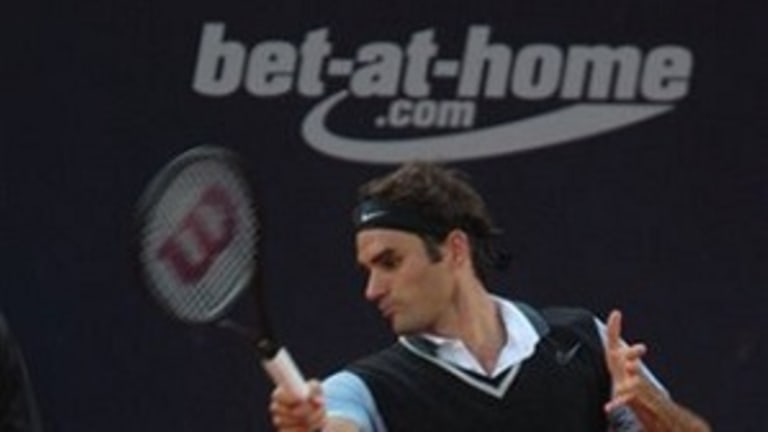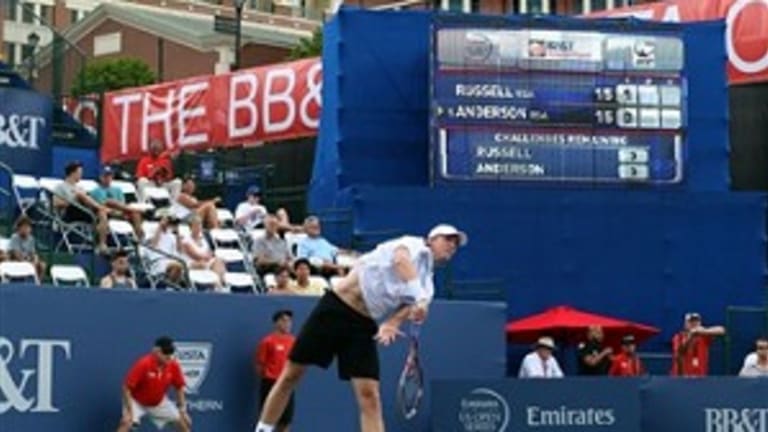Two of the top four seeds in Atlanta are Europeans (and No. 2 Anderson is a South African who developed his game in college in the U.S.), so the generalizations go only so far. But they go far enough for us to agree that the better players are mostly Europeans, and content to stay at home on the continent even with an ATP 500 coming up (Washington, D.C.) next week, followed by two Masters 1000s, and the U.S. Open.
Of course, tennis was always an attraction in Europe (on clay) in summer. But the big capitals had shot their wads by the time Roland Garros was over. The post-Wimbledon segment consisted of small tournaments in resort communities like Gstaad, Kitzbuhel, Bastad. The circuit we have today might not exist were it not for the USTA and its growth strategy.
The USTA took the concept of a summer on clay to another level during the peak of the tennis boom. In 1977, the year Guillermo Vilas won two majors and 16 of the 31 ATP tournament he entered, his summer itinerary after Wimbledon began at Kitzbuhel, Austria, and progressed through Columbus, Ohio; Louisville, Kentucky; South Orange, N.J.; and Washington D.C. — until the grand finale in Forest Hills. All of them, including the U.S. Open, were clay-court events.
The massive shift away from that model occurred in 1978, when the USTA opened its brand-new National Tennis Center, featuring hard courts chosen partly for philosophical reasons. Because most of the courts in the U.S. were (and are) hard courts, the USTA was trying to send a populist message and grow the game.
The strategy was admirable, and it worked. But one side effect was the ultimate re-structuring of the American summer events into a hard-court circuit (the takeover of the pro tour by the ATP would also play a role in this, but it’s too complicated to go into here). With a continuing wealth of American players, the hard-court circuit flourished. In addition to Cincinnati and Los Angeles, over the years there were hard-court tournaments in Indianapolis, New Haven, Long Island and the American Kitzbuhel (a world famous ski resort), Stratton Mountain, Vermont.
The shift of emphasis in North America allowed the European clay circuit to grow. And over recent years, the increasing physicality of the game, the torrid heat and humidity of the American summer, and the growing viability of clay courts as an acceptable training surface for the present-day style on all surfaces but grass made the European clay more appealing.
Lately, players also seem to have decided that they don’t require a long run-up to the U.S. Open — or any other tournament. After all, they don’t get one at the Australian Open, and it makes no noticeable change in the pecking order. If Novak Djokovic can win the Australian Open on hard courts with no warm-up tournaments, why can’t he — or anyone else — do that at the American major?
One of the realities that emerges out of all this is the importance of the elite players. I can’t imagine anyone looking to expanding the American hard-court season with so few able players to promote and vindicate it. And the Europeans have never loved the U.S. summer for many reasons, including some cultural ones. They have a hard time appreciating the American mid-west, with its empty spaces and malls. I don’t know of any players who’s ever expressed an interest in touring a working Ohio farm.
As little as six or seven years ago, the U.S. Open Series sounded like a terrific idea and a wonderful marketing opportunity for the game. But it never really got much traction. If you want to know how to run a “series” culminating with a major, just look to the schedule preceding Roland Garros.
Who knows where all this will go? But the idea that Wimbledon will end up serving as a kind of “all-star break” between two significant clay-court segments, and the U.S. Open closer to the beginning rather than the end of a long hard-court segment, looks more and more like the emerging reality with every passing year.

